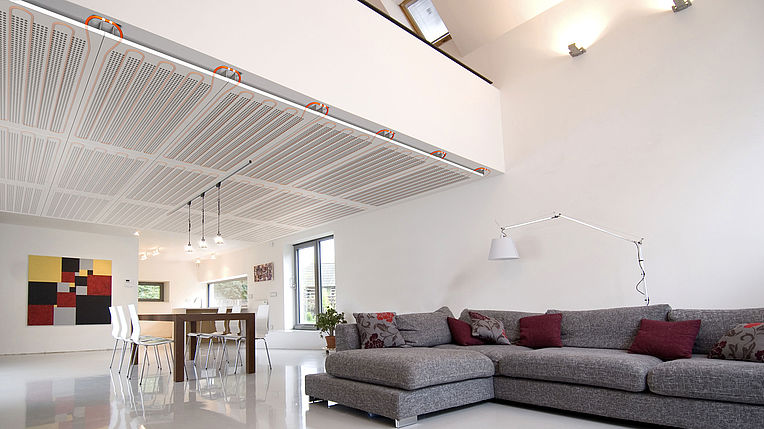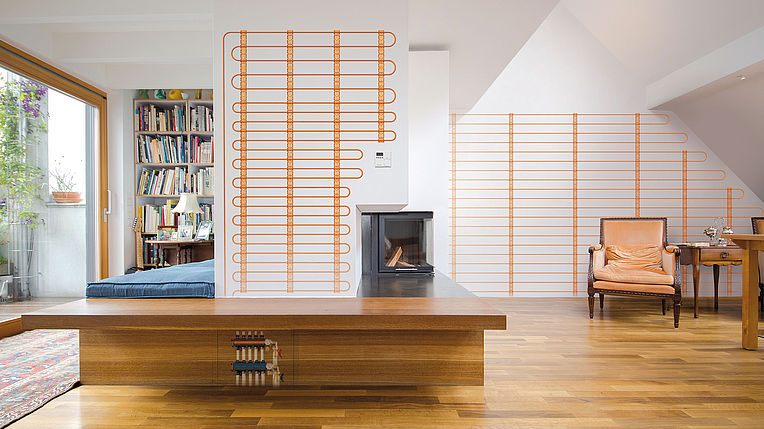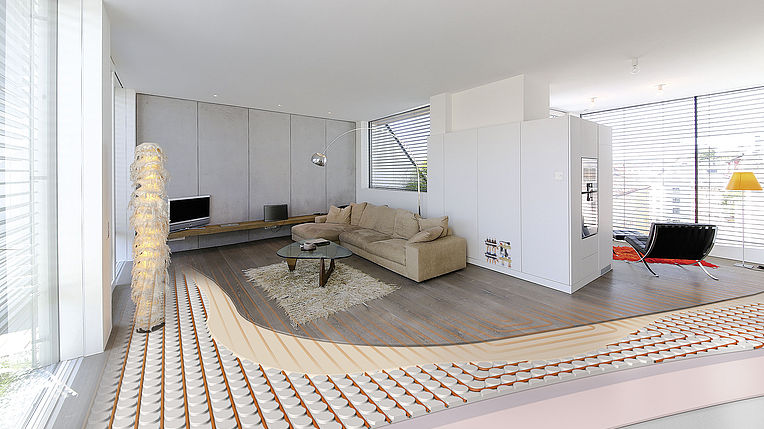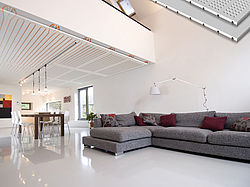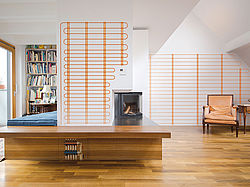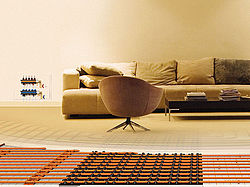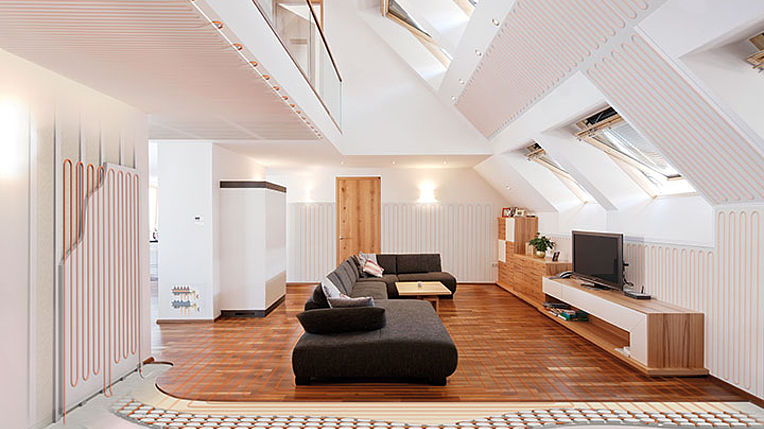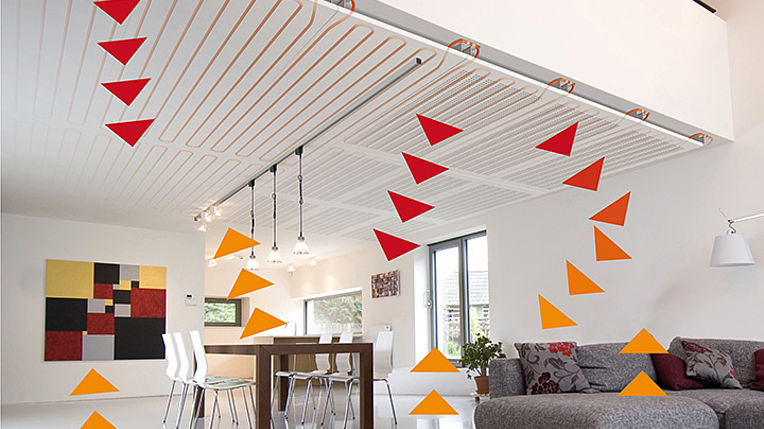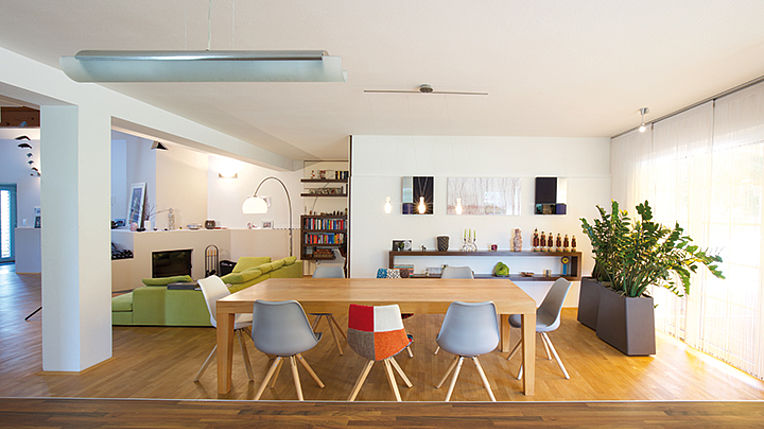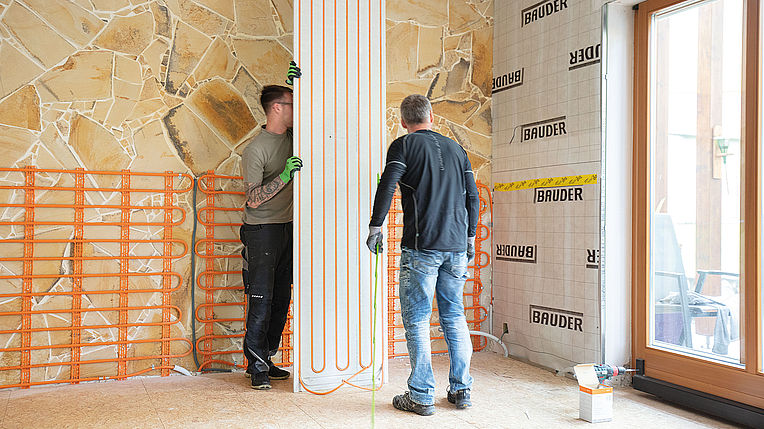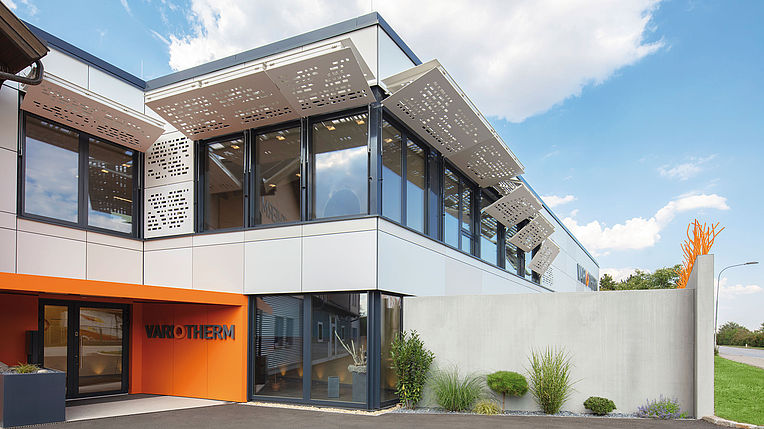COOLING SYSTEMS: WHICH IS THE RIGHT ONE FOR YOU?
Comfortable temperatures during the summer with Variotherm cooling systems
The summers are getting hotter and lasting for longer, and the number of tropically warm nights is also increasing. Do you want to escape from the summer heat when you're inside, but don't want to install air conditioning? With its cooling systems, Variotherm offers perfect solutions. And you can spend the summer indoors in pleasantly cool rooms.
Cooling systems at a glance
Ceiling cooling
Cooling ceilings operate using radiant exchange: The person in the room emits excess body heat onto the cool surfaces. There is no forced air, and no noise, which means that the ceiling cooling can also run at night. The cooling ceiling is also available with a noise dampening acoustic surface. What’s more: during the winter, the cooling ceiling can also be used for heating. Find out more.
Wall cooling
Wall cooling offers a comfortable, energy-saving alternative to air conditioning. Instead of warm water, cool water flows through the heating pipes and tempers the rooms to a comfortably cool temperature during the hot summer months. Its added benefit: with wall cooling, the system can be used to heat rooms during the winter. Find out more.
Cooling via the floor
Floor heating can also be used to help cool rooms during the summer – also called partial cooling. Cooled water flows though the heating pipes, and the human body can emit excess heat onto the cool surfaces.
This is what we’re proud of
Frequently asked questions
How does cooling via the ceiling work?
Ceiling cooling does not blow unpleasantly cold air through the room. Instead, it operates using radiant heat exchange. Cold water circulates through the pipes and cools the surfaces on the ceiling. The human body passes the excess heat into the cool surfaces in the environment. A comfortable room climate is created. Find out more about comfortable ceiling cooling here.
Why is surface cooling so comfortable?
Cool water circulates through the heating pipes at a temperature of around 16 °C and cools the surfaces. The person in the room feels comfortable thanks to radiant exchange: they emit excess heat to the cooling surfaces via the surrounding air. A pleasantly cool room climate results, which feels like sitting in the shade of a large tree. Find out more about surface cooling here.
How does an acoustic ceiling work?
An acoustic ceiling dampens the noise. The perforations in the gypsum fibre board and the acoustic fleece on the rear side of the ModulePanel conduct the noise into the hollow space behind. The sound is refracted. More precisely, acoustic ceilings reduce the reverberation time in the room. They prevent the reverberation from interfering when people are talking. The person for whom an information is intended should be able to hear it loud and clearly. Find out more about acoustic ceilings here.
What are the benefits of ceiling cooling?
✔ The radiant surface remains free of furnishings
✔ Free of forced air – does not blow dust into the air
✔ Silent – can also run at night
✔ Heating + cooling + acoustic function + finished wall
✔ A comfortable room climate thanks to heat exchange
